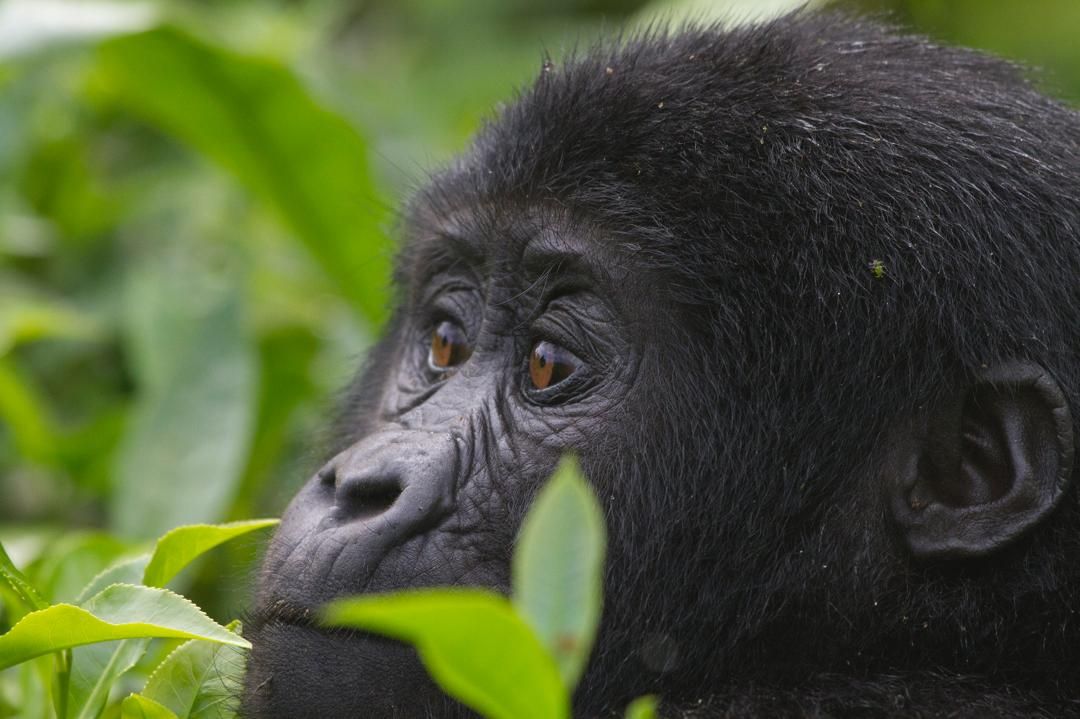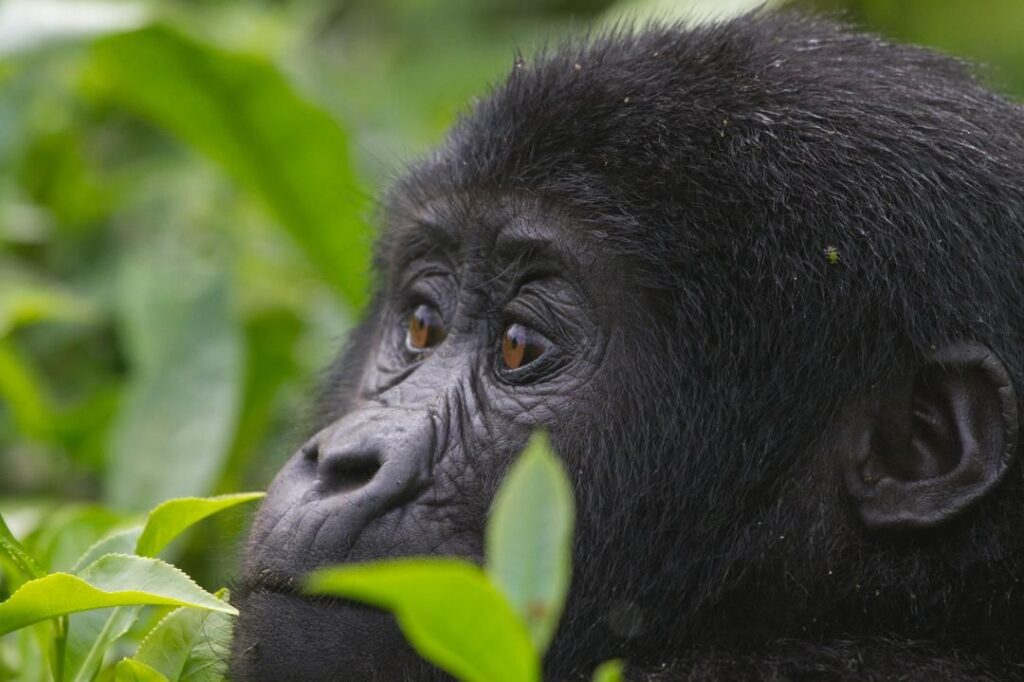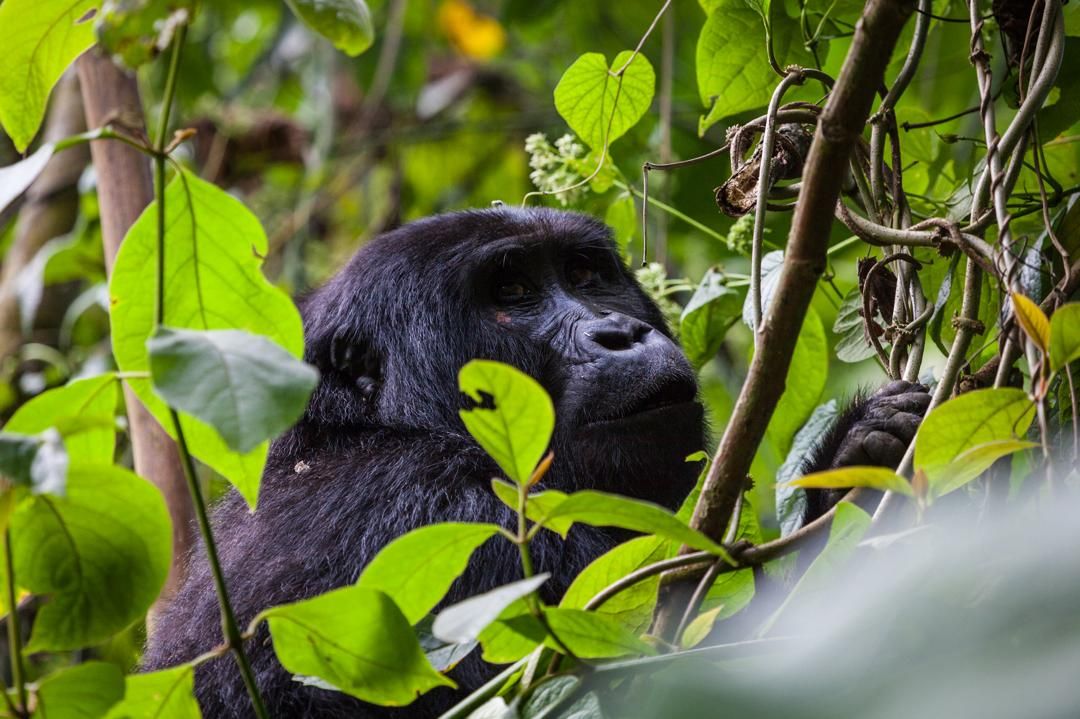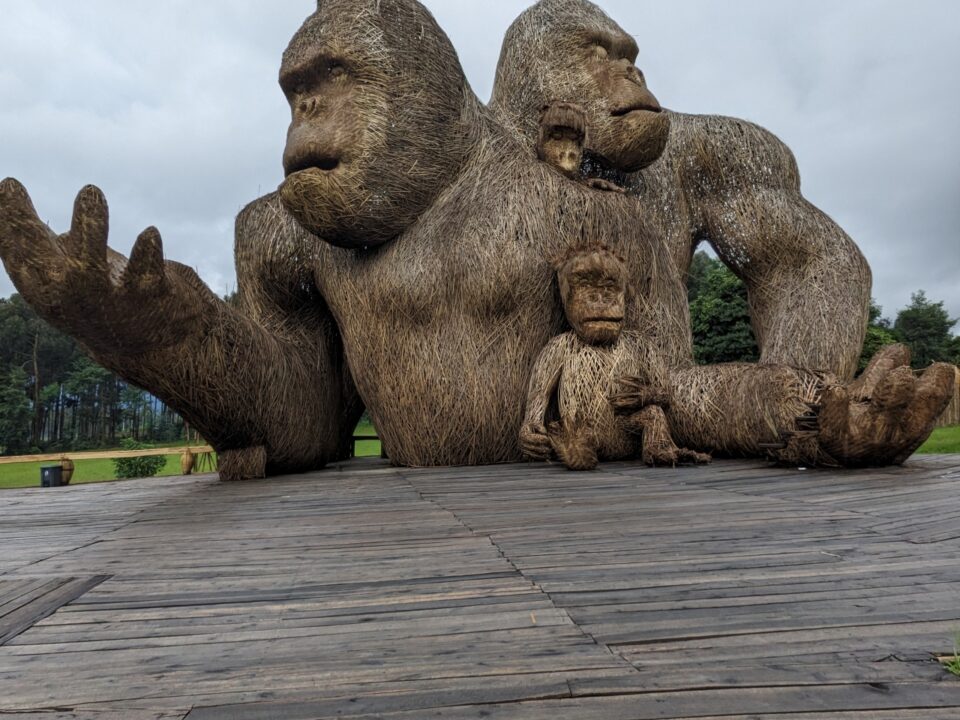
The Gorillas of Uganda
January 8, 2025
Experience Kwita Izina 2025: Rwanda’s Celebration of Conservation and Culture
August 12, 2025Meet the Gorillas: Nature’s Gentle Giants
When you think of gorillas, what comes to mind? Maybe strength, power, or those intense stares you’ve seen in documentaries. But here’s the thing — beneath all that muscle is one of the most peaceful, intelligent, and surprisingly relatable animals on the planet.
Let’s take a closer look at these amazing creatures and why they deserve more attention — and protection — than they get.
So, What Exactly Are Gorillas?
Gorillas are the largest members of the primate family, and yes — that includes us. They share around 98% of our DNA, which makes them our close cousins. You’ll find them in the dense forests of central Africa, usually moving in tight family groups called troops.
There are two main types of gorillas:
- Eastern gorillas, including the famous mountain gorillas
- Western gorillas, like the western lowland gorilla
They may live in different regions, but they all have a lot in common — and not just the impressive chest-beating moves.
Are Gorillas Really That Smart?
Absolutely. Gorillas are incredibly intelligent. Some, like the late Koko the gorilla, learned to use sign language to communicate with humans. Koko could express emotions, make jokes, even ask for a pet cat. In the wild, gorillas use tools, learn from each other, and communicate with a rich mix of sounds, gestures, and facial expressions.
They’re not just smart — they’re deeply emotional, too.
What Do Gorillas Eat?
Despite their powerful build, gorillas aren’t hunters. In fact, they’re mostly plant-eaters. Their diet includes:
- Leaves
- Shoots
- Fruits
- Bark
- Occasionally insects like ants or termites
A fully grown male gorilla can munch through about 40 pounds of food a day — that’s a whole lot of salad.
The Social Life of a Gorilla
Gorilla life is built around family. A group usually includes one dominant male (the silverback), several females, and their young. The silverback leads and protects the group, kind of like a big, furry bodyguard and father figure rolled into one.
These animals form strong emotional bonds. They groom each other, play, and even grieve when a member of the group dies. If you watch them long enough, it’s hard not to see echoes of our own families.
Are Gorillas in Trouble?
Unfortunately, yes. Gorillas are critically endangered, mainly because of:
- Habitat destruction from logging and mining
- Poaching and illegal wildlife trade
- Diseases like Ebola
- Human conflict and encroachment
But it’s not all bad news. Conservation groups — like the Dian Fossey Gorilla Fund and WWF — are making a real difference. Thanks to their work and community partnerships, some gorilla populations are starting to recover.
Why Should We Care?
Because they aren’t just fascinating they’re vital to the ecosystems they live in. By spreading seeds and helping forests grow, they play a key role in keeping the environment healthy. Protecting gorillas means protecting the forests, the wildlife that lives there, and, ultimately, ourselves.
And honestly? The more you learn about them, the harder it is not to care.
Final Thoughts
They are strong, yes but they’re also thoughtful, social, and deeply emotional animals. They’re not the beasts people once thought they were. They’re more like us than we might like to admit.
And maybe that’s exactly why we need to protect them.
“The more you learn about the dignity of the gorilla, the more you want to avoid people.” — Dian Fossey





1 Comment
Nice share!